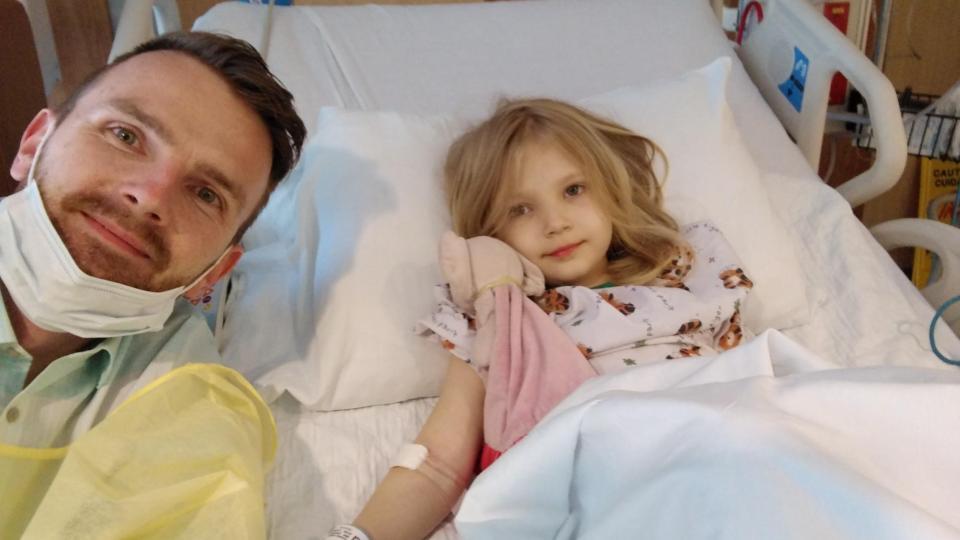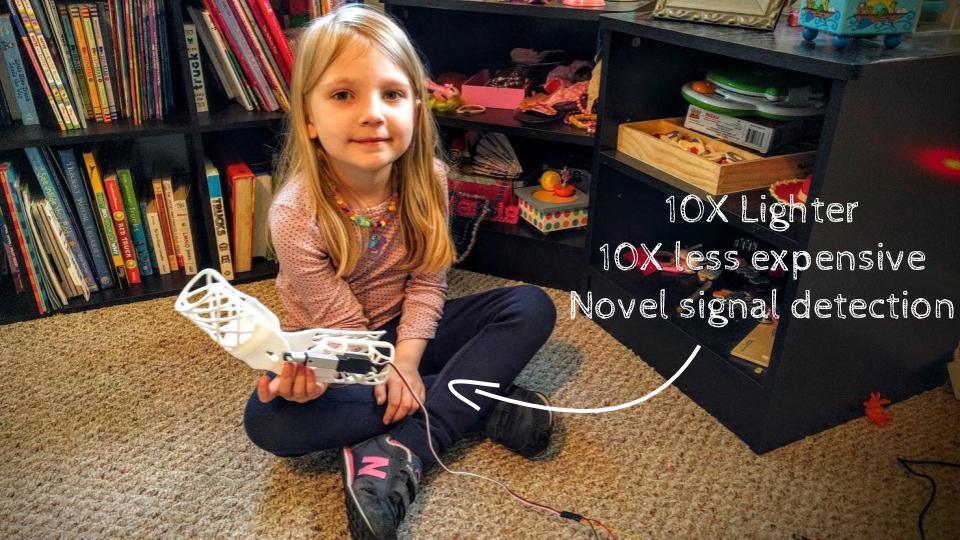Father Works with 5-Year-Old Daughter to Develop 3D Printed Robotic Brace to Help Restore the Use of Her Arm
 While 3D printing, robotics and other new technologies have enabled medical professionals to do incredible things for patients, they’ve also made it easier for patients and families to take matters into their own hands if they’re not satisfied with conventional solutions. That was the case with Bodo Hoenen, whose five-year-old daughter Lorelei suddenly developed a rare condition called acute flaccid myelitis (AFM), a dangerous inflammation of the spinal cord which results in polio-like symptoms and possible long-term damage. The disease, which occurs most often in children, can even be fatal in some cases.
While 3D printing, robotics and other new technologies have enabled medical professionals to do incredible things for patients, they’ve also made it easier for patients and families to take matters into their own hands if they’re not satisfied with conventional solutions. That was the case with Bodo Hoenen, whose five-year-old daughter Lorelei suddenly developed a rare condition called acute flaccid myelitis (AFM), a dangerous inflammation of the spinal cord which results in polio-like symptoms and possible long-term damage. The disease, which occurs most often in children, can even be fatal in some cases.
Thankfully, Lorelei recovered from her illness, but not without lingering effects. Her left upper arm was rendered almost completely paralyzed; although she could move her hand and wrist, her shoulder and most of her arm were left immobile. Despite physical therapy, it was likely that Lorelei would never recover full function of her arm – but her father refused to accept this, taking matters into his own hands.
Hoenen, who has a background in computing, began researching assistive devices in the form of robotic exoskeletons that have helped paralyzed or partially paralyzed people learn or relearn to use their muscles effectively. He believed he could create a device that would stimulate Lorelei’s rehabilitation and help her to use her paralyzed arm again.
“She could accomplish very slight movement when her arm was in a zero gravity state like when submerged in water,” Hoenen explained in a blog entry. “Then she was able to move it about 10 degrees in either direction unassisted. This meant that at least a very weak signal was reaching her muscles and that not all the motor neurons were completely damaged. If we could figure out how to pick up those signals, we could use it to control the robotic assistive arm and encourage new neural connections to be made.”
Although he had no experience in robotics, Hoenen developed a plan after intensive research. He would scan Lorelei’s arm to get her exact measurements, then design and 3D print two lightweight braces that would fit her forearm and upper arm. The braces would then be connected with an actuator controlled through embedded sensors.
Knowing that he was no expert, Hoenen reached out to the community through a series of YouTube videos, asking for advice. He explained his concept and showed his audience a basic design, and within days he was getting feedback and suggestions from people around the world.
“After a few weeks, we had a pretty good understanding of all the components we needed to get something working,” he said. “With a tight budget, we went shopping… we bought an Arduino, an EKG board, various sensors and built an arm rig to test it all out on.”
 After building a few experimental prototypes using materials such as Legos, Hoenen was ready to create a more permanent device. While he had a 3D scanner to scan Lorelei’s arm, he didn’t have access to a turntable, making getting a good scan a challenge. Ever resourceful, he had his daughter stand on a plate, which he slowly rotated while lying on the floor in front of the scanner. Soon, he had a good 3D model to work from.
After building a few experimental prototypes using materials such as Legos, Hoenen was ready to create a more permanent device. While he had a 3D scanner to scan Lorelei’s arm, he didn’t have access to a turntable, making getting a good scan a challenge. Ever resourceful, he had his daughter stand on a plate, which he slowly rotated while lying on the floor in front of the scanner. Soon, he had a good 3D model to work from.
Hoenen 3D printed the braces in PLA, making them flat at first. Once they finished printing, he heated the plastic again so that it softened and could be molded around a cast of Lorelei’s arm to ensure perfect fit and allow for any necessary changes. He then ran into another challenge when he added the sensors, which ideally would pick up her muscle signals and trigger the robotic arm’s movement. Lorelei’s muscle signals were too weak, however, for the sensors to pick up.
Hoenen then drew on his computing knowledge, and additional help from his online network of supporters, to come up with a new idea based on machine learning. His connections led him to a company that was working on a similar idea, and they sent him an evaluation unit containing 17 electrodes that he attached to Lorelei’s arm. After working with the technology for a few days, he and Lorelei managed to train an algorithm to recognize when she was trying to move her arm, and she began practicing with the help of a virtual arm.
Lorelei still has a way to go, but she’s made progress, and she’s also learned a lot about engineering while working alongside her father on the prototypes. With the help of a group of inventive volunteers from around the world, the father-daughter team designed a robotic arm prototype that is ten times lighter and ten times less expensive than comparable technology currently being used. Now Hoenen wants to open source the technology so that it’s available to everyone. You can learn more about his work and stay updated on Lorelei’s recovery at their Facebook page. Discuss in the 3D Printed Assistive Brace forum at 3DPB.com.
[Images: Bodo Hoenen]
Subscribe to Our Email Newsletter
Stay up-to-date on all the latest news from the 3D printing industry and receive information and offers from third party vendors.
You May Also Like
3D Printing Unpeeled: New Arkema Material for HP, Saddle and Macro MEMS
A new Arkema material for MJF is said to reduce costs per part by up to 25% and have an 85% reusability ratio. HP 3D HR PA 12 S has been...
3D Printing News Briefs, January 20, 2024: FDM, LPBF, Underwater 3D Printer, Racing, & More
We’re starting off with a process certification in today’s 3D Printing News Briefs, and then moving on to research about solute trapping, laser powder bed fusion, and then moving on...
3D Printing Webinar and Event Roundup: December 3, 2023
We’ve got plenty of events and webinars coming up for you this week! Quickparts is having a Manufacturing Roadshow, America Makes is holding a Member Town Hall, Stratafest makes two...
Intuitive Machines Debuts $40M Hub for Lunar Ambitions and 3D Printing Tech
Best known for its pioneering work in lunar exploration and its development of the Nova-C lunar lander, Intuitive Machines (Nasdaq: LUNR) has marked yet another significant milestone. The leading space...


































